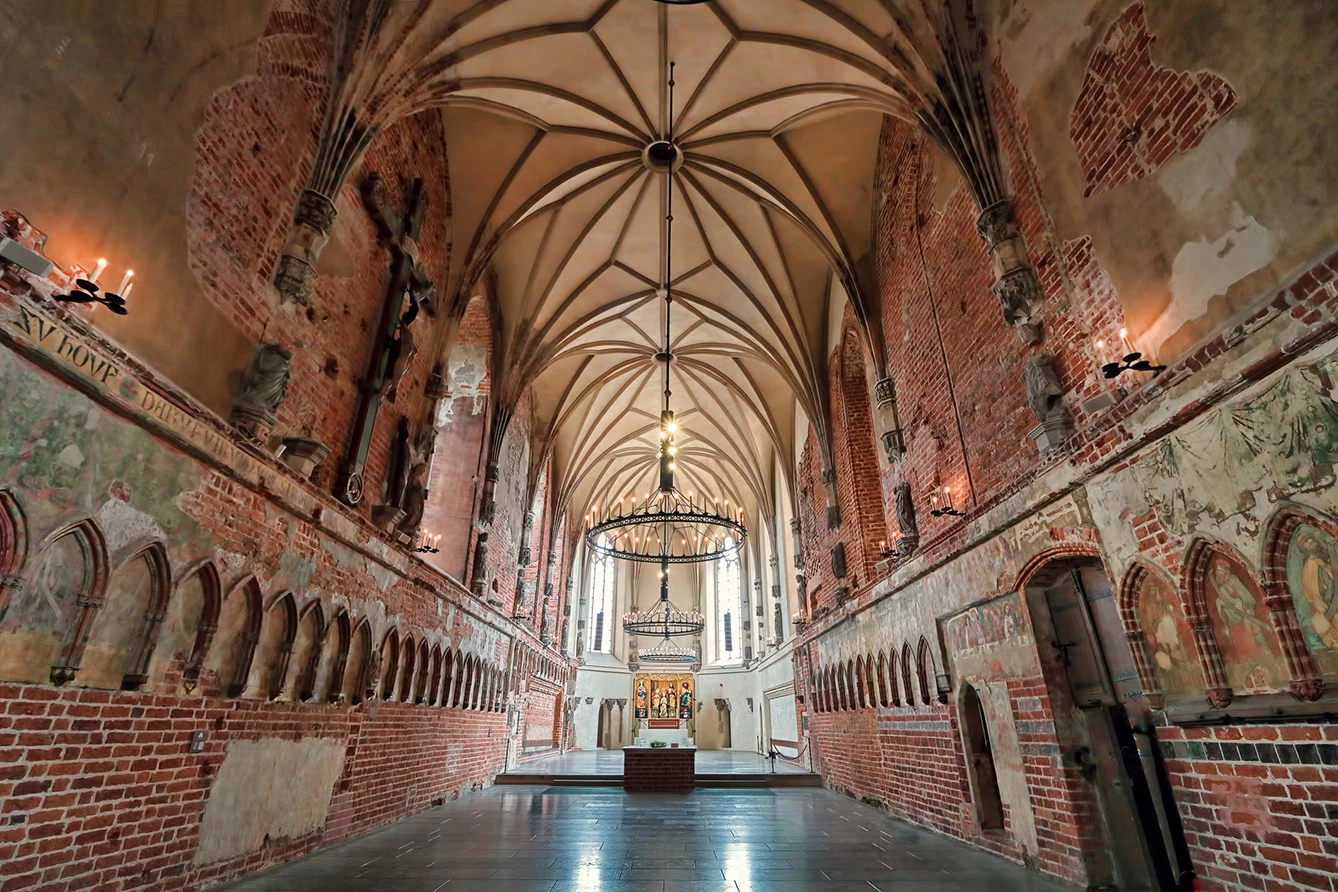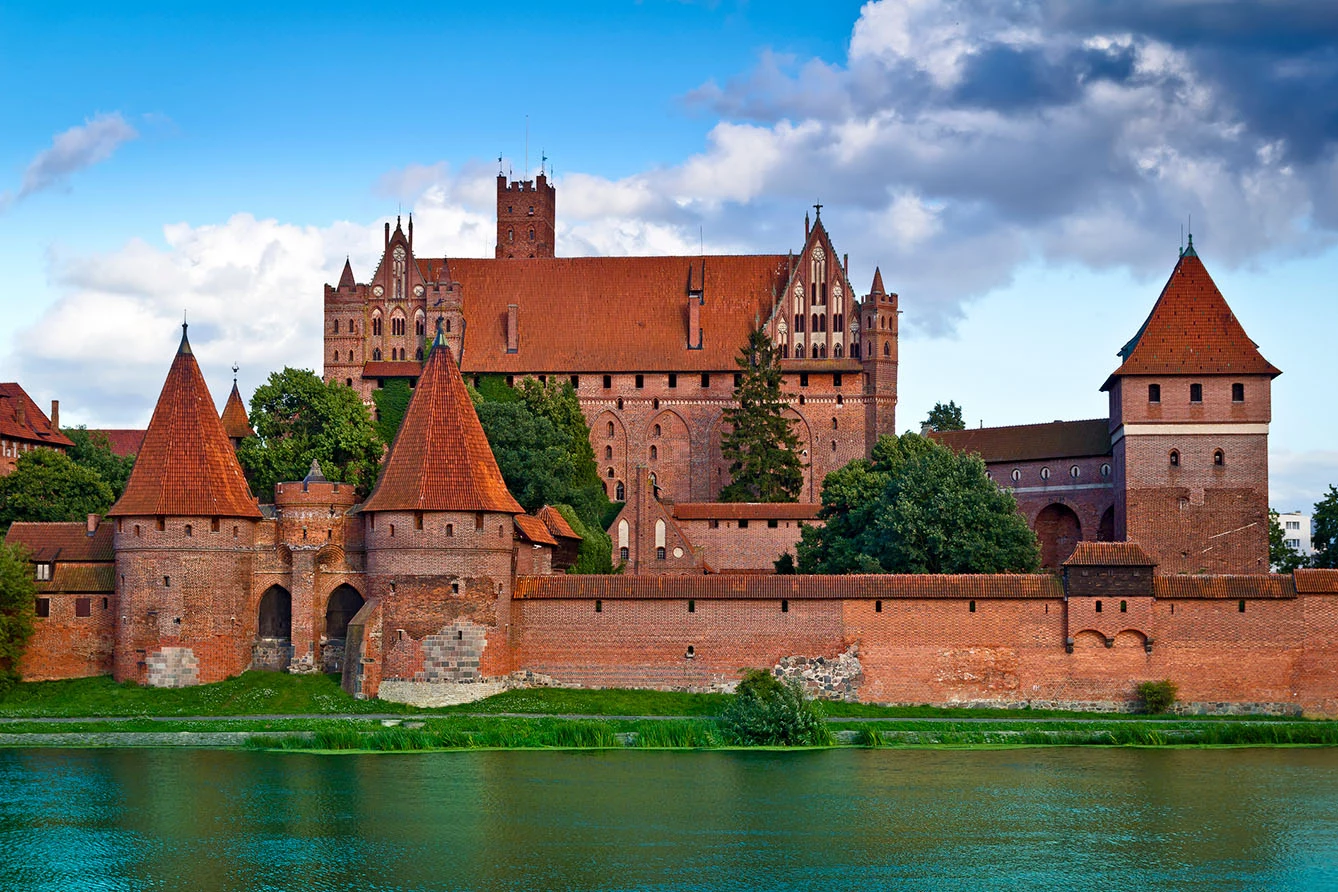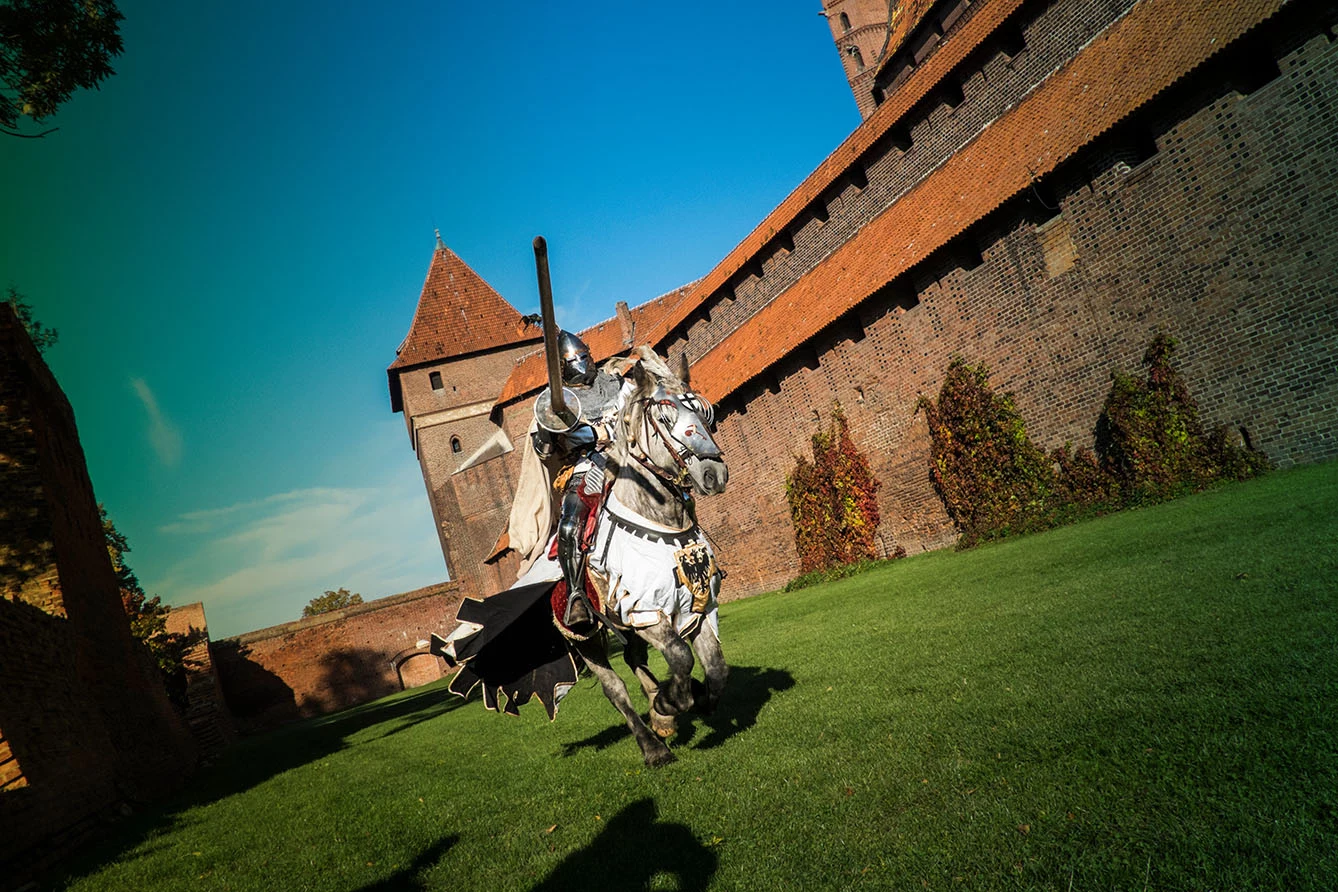While the Templars – Knights of the Jerusalem Temple – are the go-to knightly order for conspiracy theorists and history junkies, its German equivalent, known as the Teutonic Order, may have an even more compelling history. Especially long after the Crusades, when Jerusalem was again out of range for Europeans and knights from Jerusalem had lost their original purpose, the Teutonic Order had its own mighty state in Central Europe. Its capital, Malbork, currently in Poland, was the biggest castle in the world.
As Teutonic knights were known for fighting Islamic forces in the Holy Land, many rulers in Europe were tempted to compare their own situation to the “holy war” fought on the eastern shore of the Mediterranean. Such was the case for Polish Prince Konrad Mazowiecki, who offered a large area in Pomerania for knights to settle. In return, the knights were supposed to help fight the Pagan tribes that still inhabited the area in the 13th century.
Malbork: from hostile capital to Polish pride
The knights, skilled both as warriors and entrepreneurs, managed to develop their land in subsequent decades so that by the 15th century, it had turned into a vital power. Wars and deals led to the annexation of even more land, which was developed, and new cities were founded. For many years, the Teutonic state was the most potent enemy of the Polish Kingdom.


Malbork, the state’s capital, conveniently located on the Nogat River, a tributary of the Vistula, was both the stronghold and representative palace of the Grand Master, ruler of the state. Built in the late 13th century after Poland defeated the Order, by the 15th century, it had turned into the official residence of Polish kings, although it was never the primary one. It was reconstructed in the 19th and 20th centuries by both German and Polish architects as the territory changed hands; it is now one of Poland’s major UNESCO World Heritage Sites.
Although Hradčany, the castle in Prague, Czechia, holds the Guinness record as the largest castle in the world, encompassing around 7 hectares, it’s no match for the twice as large (*some even say three times as large) castle of Malbork. In its heyday, it’s estimated to have consisted of some 30 to 50 million bricks.
The gothic keep kept its original purpose for a long time. It was a military (or quasi-military) facility even in the 20th century. And as such, it was never conquered, although it did change sides due to political circumstances. In the 17th century, during the Polish-Swedish war known as Swedish Deluge, it capitulated and remained in Swedish hands for a few years. Today it’s still undefeated – as a tourist destination for those looking for a genuinely medieval feel.
If you like the theme of castles then also explore the country with most castles.







